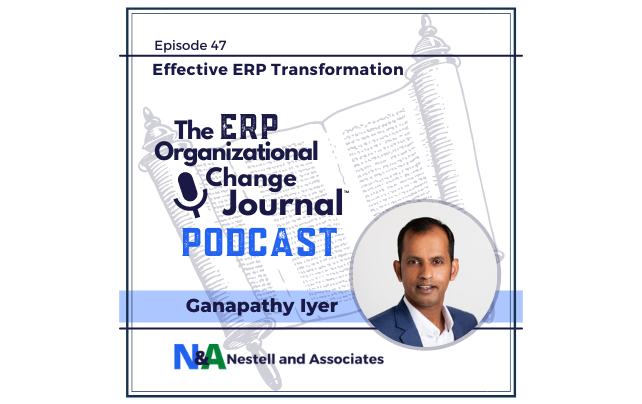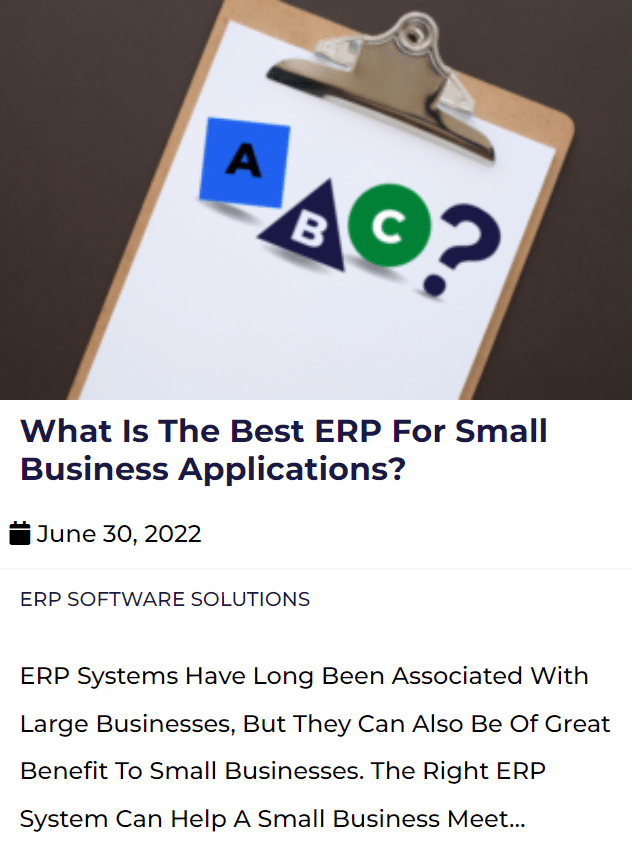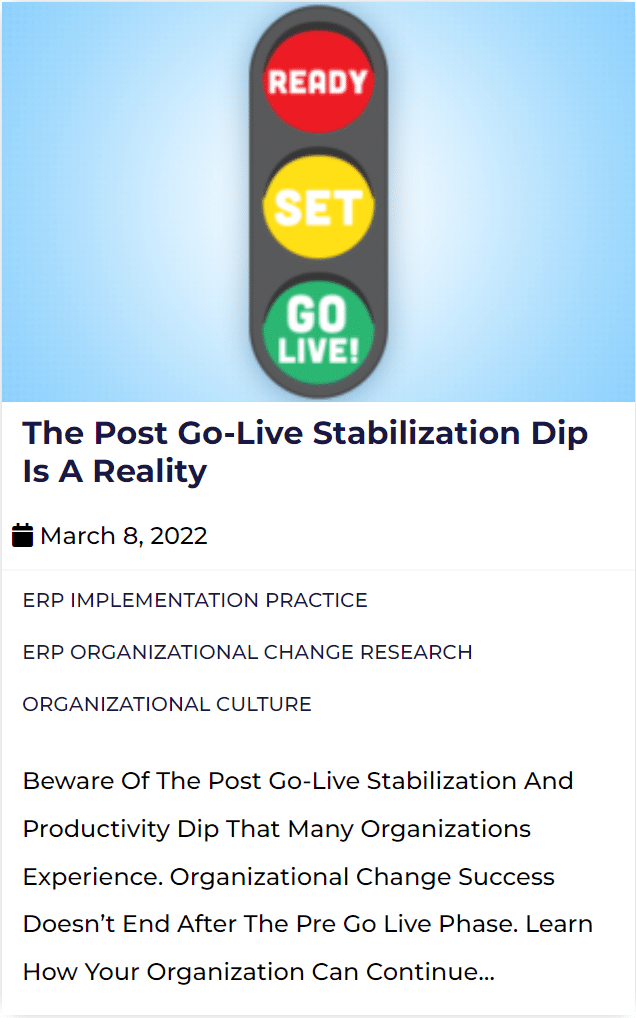An ERP go-live readiness checklist helps ensure a coordinated and successful go-live.
Requirements for ERP Go-live
An ERP go-live readiness checklist helps ensure a coordinated and successful go-live. The checklist should include the following:
- finalizing user manuals and training materials
- verifying data quality
- testing integration between new and legacy systems
- establishing communication channels
By utilizing an ERP go-live checklist, businesses can avoid last-minute surprises and ensure a successful implementation of their new ERP system.
7 Components of a Successful ERP Go-live Checklist
1. Understand the Business
Understanding the business environment is a key to ERP success. Current state value stream mapping leads to future state value stream mapping. This step helps to understand the current business environment and the potential opportunities to improve. While also assisting you in creating an ERP gap analysis and needs assessment which is key information used to create an ERP project plan.
2. Understand the Organizational Culture
Understanding the organizational culture “temperature” is a critical aspect of successful ERP organizational change efforts. Organizational culture plays a significant role and has a significant impact on organizational performance.
Organizational culture plays a critical role in the ability to work through transformation, teamwork, involvement, alignment, vision, innovation, focus, organizational learning, and more. Your ERP organizational change project plan needs to consider tactical action required in which to support and advocate for these critical ERP success factors. You may even need to consider conducting a culture readiness assessment. Culture matters during an ERP organizational change effort because an organization’s culture is the beliefs, values, and behaviors that a group has adopted over time as a way to survive and succeed.
Evidence indicates that organizations with healthy cultures perform better. At Nestell & Associates, culture matters to us because we experience its effects on general performance (and ERP performance) every day.
When it comes to ERP and organizational change management, organizations are recognizing the increasing need to manage their culture with the same skill and attention they give to their strategy, their financials, and other key performance measures.
3. Planning and Preparation
The Planning and Preparation phase of an ERP implementation project is when the project team begins to define the scope of the project and create a detailed plan for how the ERP system will be configured and deployed. This phase is critical to the success of the project, as it sets the foundation for all subsequent work.
This typically includes conducting an ERP gap analysis, designing the ERP system, developing implementation timelines and project plans, and training users on the new system. All these activities are essential for a successful ERP implementation, and they should all be included on your go-live checklist.
By taking the time to properly plan and prepare for your ERP implementation, you can help ensure a smooth transition to the new system.
4. Data Migration
Simply put, data migration is the process of moving data from one system to another. ERP data migration can be a huge undertaking and it is typically done when an organization upgrades or changes ERP systems. This can be a complex process, as it often involves converting data from one format to another and ensuring that all data is accurately transferred, which is why it’s such an important component of ERP go-live.
There are a number of different ways to migrate data, so you’ll need to choose the ERP system option that best suits your needs. This can include manual entry, export/import, or even automated tools.
There are a few key steps that are involved in data migration:
- Data extraction: This is the first step in data migration. Data must be extracted from the source system and converted into a format that can be read by the target system.
Data transformation: This step involves converting the data into the desired format. This may require changing field sizes, data types, or even adding or removing fields entirely. - Data loading: Once the data has been transformed, it can then be loaded into the target system. This step can be done manually or through an automated process.
- Data verification: After the data has been migrated, it is important to verify that all data has been accurately transferred. This can be done through manual checking or through automated tests.
Are there risks to a business with data migration?
There is always some degree of risk, but you can manage it by preparing for go-live beforehand.
It is important to plan for ERP data migration as part of your ERP go-live readiness checklist. This will ensure that your data is moved safely and securely and that you do not lose any important information in the process.
5. System Testing
ERP systems testing is a process of verifying and validating that an ERP system meets the business requirements and performs as expected. ERP systems are complex and usually integrated with other enterprise applications. To ensure a successful ERP implementation, it is essential to have a robust testing strategy in place.
System testing should be included in your ERP go-live readiness checklist for several reasons. Here are a few to consider:
- System testing will uncover defects that could impact the functionality of the ERP system.
- System testing will help to ensure that the ERP system integrates seamlessly with other enterprise applications.
- System testing will verify that the ERP system meets performance expectations.
- System testing will help to ensure that the ERP system is ready for go-live.
Considering these, ERP systems testing is a critical piece of the ERP go-live readiness puzzle. Without a robust testing strategy in place, you risk implementing an ERP system that does not meet your business requirements or perform as expected.
6. End-User Training
ERP end-user training is crucial for a successful ERP go-live. End-user training ensures that users have the knowledge and skills necessary to effectively use the ERP system. Without proper training, users may be unable to take full advantage of the ERP system’s features and functionality, which can lead to inefficiencies, decreased productivity, and user satisfaction.
End-user training can help to ensure that data is accurately entered into the ERP system, which is essential for maintaining accurate record-keeping. ERP end-user training should be on your ERP go-live readiness checklist.
7. Go-Live Support
Go-live support is the last step in your ERP journey and probably the most important one. Go-live is when you actually start using your new ERP system for real, day-to-day operations. This is a huge milestone, but it’s not the end of the road. To ensure a successful post go-live, you need to have a solid plan in place for Go-Live support.
Go-Live support is all about managing risks, addressing issues, and ensuring that your users can successfully use the new system. It’s vital to have a team of experienced ERP professionals on hand to help with any Go-Live issues that may arise.
There are many factors to consider when planning Go-Live support, such as user training, data migration, change management, and technical support. It’s important to have a clear understanding of your needs and priorities before you start implementation. With a well-planned Go-Live support strategy, you can minimize disruptions and maximize success.

Go-Live is a critical phase of any ERP implementation, and proper preparation is essential to ensuring a successful Go-Live.
Avoiding Common Pitfalls with an ERP Go-Live Checklist
There are many potential problems that can occur during Go-Live and having a Go-Live readiness checklist can help you avoid common pitfalls. Some of the most common problems include;
- insufficient Go-Live support
- inadequate testing
- and unrealistic expectations.
Having a support team in place before Go-Live can help you avoid these problems by providing the necessary resources and expertise. In addition, rigorous testing prior to Go-Live can help identify potential problems so that they can be addressed before Go-Live.
Finally, setting realistic expectations for the Go-Live process can help ensure that everyone involved is on the same page and knows what to expect. By taking these steps, you can avoid common post Go-Live pitfalls and set yourself up for success.
Get Started with a Customized ERP Requirements List
Are you ready to start your ERP project, but not sure where to begin? Our team of experienced ERP consultants can help you create a customized ERP requirements list that is tailored to your specific business needs. We will work with you to understand your business processes and objectives, and then we’ll create a detailed list of requirements for your ERP project.
Authored By
Nestell & Associates
Related Podcast

Episode 47: Effective ERP Transformation
In this episode, we discuss “Effective ERP Transformation with Mr. Ganapathy Iyer.
Ganapathy shares the definition of a successful digital transformation project, why digital transformation projects fail, how to manage project burnout, effective decision making, project sponsorship, data migration management, and making proper decisions effectively.
Related Articles
About Nestell & Associates
Where People, Processes, and Technology Align
Nestell & Associates is a strategy and management firm. We can help you take your portfolio companies to the next level by demonstrating how to execute a scalable, methodical, and disciplined approach to ERP Organizational Change and Digital Transformation success.




